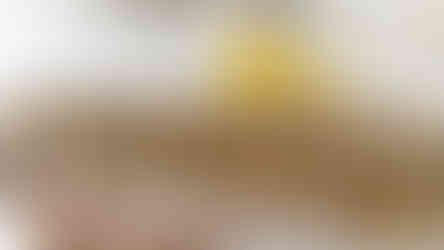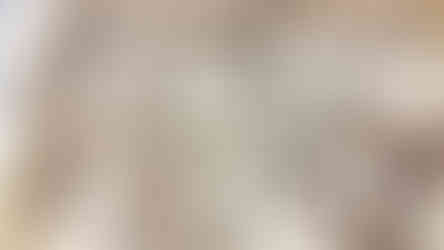Weaving Silk Stories - research - bombyx mori and the giants
Many types of moth make silk; beyond, that is, those used by man for the production of the fabric of the same name.

Over the summer I visited the stores of the Natural History Museum and was shown around by the curator in charge of, part of, the Lepidoptera collection. That is, the impressively knowledgeable Alessandro Giusti. There are some 30 million specimens in the class known as insects, 12 million of which are from the order known as Lepidoptera, which includes butterflies and moths (both are called lepidopterans). Examples of other orders are Coleoptera, the beetles, Diptera which includes flies and mosquitoes, Hymenoptera which includes bees and Orthoptera which includes grasshoppers and crickets.
In the Lepidotera order there are 135 families, relatively few of which have in them moths that, as caterpillars, produce silk thread cocoons for pupating inside of (as extra protection whilst waiting to become an adult). That said, all moth caterpillars are able to produce silk to some degree, and they use it in a variety of ways. Some spin a little bit of thread between leaves in order to protect themselves without the bother of creating a full cocoon, others pupate underground, for example, in chambers formed from clay and silk.
Saturniidae:
"If you’re under the impression that moths are dull creatures who eat holes in sweaters, you haven’t encountered a giant silk moth."

Moths from the Saturniidae family tend to be large I had to keep photographing them alongside my hand so as to really appreciate their scale. And they usually have an eye spot on their wings, which is how they got their name because to the first observers this patternation looked like the planet Saturn with its rings.
Please click on any of the images in this post to enlarge them and see more detail. All images are from the collections of the Natural History Museum, London © Stephanie Smart

Saturniidae is one of the families of moths whose caterpillars all produce cocoons, some of which are surprisingly loose and soft looking. They are distantly related to their Oriental brethren Bombycidae; the family from which the working silk moth caterpillar Bombyx mori comes; they likewise all produce cocoons but as you can see in the images below, their pure white cocoons are very much more structurally solid. Some Saturniids are semi-domesticated and the silk spun by their larvae is harvested but it is not generally commercially viable.
Saturniids pupate in the autumn, their transformation into adults begins in the spring and they spend the winter, as pupae, in a state of diapause or suspended animation.
Members of this family include the Lo moth, the Emperor moth, the Cecropia moth, the Luna moth, the Polyphemus moth and the Imperial moth. These Giant moths are very beautiful and far more colourful than I imagined.
Whilst the fluff on their bodies and areas of their wings looks like silk velvet other areas appear to be coated with a type of moth dust, it is as if the colours of their wings were chalked on and rubbing off. This is actually a layer of shed scales, each of which, if put under an electronic microscope, can be seen to be quite complex in structure with grooves and angles.
There are some lovely images of the Emperor moth here
Emperor moth caterpillars are also large, up to four inches long, and often have spiny tubercles, generally harmless to the touch, the exception being that of the Io moth caterpillar. I was seeing dried specimens of course so the bright greens that some would once have been have mellowed into more muted golds and browns, the pigment fading under light and in humidity as surely as I have found watercolour ink on certain types of paper can do, having trialled it on pieces I've previously made. I love the fading nature of colour, of how generally ephemeral it's nature is, of how it speaks of age but can be semi preserved under certain conditions.
It was fascinating to see some of their eggs also.
Bombyx mori:
I did also see examples of the domestic silk moth, it's pure white colouration startling in comparison to all the other moths I saw that day.
To see the stages of it's life cycle please scroll through the images shown to the left, remembering of course that if the cocoons are made into raw silk then the stages of the life of the caterpillar won't be reached as the pupae will have been killed off inside the cocoon. For more about the whole process I'd suggest: https://www.embibe.com/exams/life-history-of-silk-moth/
"Bombyx mori, the domestic silk moth, is an insect from the moth family Bombycidae. The silkworm is the larva or caterpillar of a silk moth. It is an economically important insect, being a primary producer of silk. A silkworm's preferred food are white mulberry leaves, though they may eat other mulberry species and even the osage orange. Domestic silk moths are entirely dependent on humans for reproduction, as a result of millennia of selective breeding... Domestic silk moths are very different from most members in the genus Bombyx; not only have they lost the ability to fly, but their color pigments have also been lost...Sericulture, the practice of breeding silkworms for the production of raw silk, has been under way for at least 5,000 years in China, whence it spread to India, Korea, Nepal, Japan, and the West." - https://en.wikipedia.org/wiki/Bombyx_mori
In this YouTube video you can see a live domesticated silk moth: https://youtu.be/Pi7QN2l9yyo
Bombyx mandarina:
And there are wild silk moths that are not giants (other species of Bombyx).
Their silk production is not commercially viable but the Bombyx mandarina is the closest relative of the Bombyx mori. It is from the Bombyx mandarina that the Bombyx mori was domesticated. The former can be found in areas as far flung as northern India, northern China, Korea, Japan and the far eastern regions of Russia but the domestic silk moth derives from Chinese rather than Japanese or Korean stock.
I went to visit the amazing national collection of insects that the Natural History Museum holds with design in mind, of course (after all I am no Lepidopterist). That is, I went with the design of at least one new paper garment for my next collection, Weaving Silk Stories, in mind. It's early days for this new project but to that end - though I will likely also incorporate aspects of others - I must admit, purely aesthetically, my favourite was the Hyalophora euryalus, the Ceanothus Silkmoth shown below. Do please scroll through the images I took of a few different individuals of this kind whilst allowing for slight differentiation therefore in the colouration between photographs.
Another aspect of many of the moths I saw that I found utterly aesthetically intriguing were the wonderful antennae that so many seemed to be sporting. Whilst some look like twisted wire and some more like brushes the antennae of, for example, Saturniid males are said to be able to detect pheromone signals emitted by the females from more than three miles away, even when it has diffused to only a few molecules. He then follows this scent toward the higher concentrations, where she is. And while you can see a fine pair on my favourite moth (above) here are some more:
I have to also show you here how much more semi-translucent some silk moths are than others. Anyone who knows my work will know that I have a background in working with glass and you'll know also that it is, in part, the juxtaposition which paper likewise offers, the ability to be both semi-translucent and/or utterly opaque that appeals to me. Also of course the fragility of both media seems to accord directly with the body of a moth. No doubt, like glass and paper, the body of a moth also has a relative strength, apparent when forces in the world are working with rather than against its nature.
Then there are the ephemeral examples of moth design that might be paper kites for their amazing tail trim.
The storage of some insect samples in the Natural History Museum is in the process of being updated. In the collection there are also still species that haven't been previously identified and which are therefore only now being named and written about for the very first time.
Those which are already on fresh white backgrounds in new display drawers, even whilst pinned in place, seem to soar like aeroplanes. And if I'd thought that whilst looking at individual Saturniidae and Bombyx mandarina I thought it even more when my attention was briefly diverted away from the primary silk moth families toward these amazing examples of the Euchloron megaera (the verdant hawk), Hemaris fuciformis (the Broad-bordered Bee Hawk-moth) and Daphnis nerii (the oleander hawk-moth). Suddenly I understood the references to moths in the names of WWII bombers. Nature always gets their first with perfection of design (please click on the images below or scroll and view).
But I digress. And I digressed a little further on my visit to look briefly at a small number of the possible drawers of butterflies in the store (who could resist!) Definite inspiration for future work.
And apparently the Comma butterfly caterpillar, whilst feeding on nettles might twist the leaves, sort of sewing sections together, with silk, to create a form of protection; allowing the caterpillar to hide inside during the day and come out only at night to feed. So sewing happens in nature and some butterfly caterpillars do also produce silk. The colour of butterflies is structural, with perhaps a little pigment included in the scales, tiny molecule of various chemicals that produce colour, but bound together with the structural colouration making the forms even more complex and beautiful.
I concluded my silk moth centred visit looking directly at some of the samples of raw silk and cocoons which the Natural history Museum also holds. Many are still in the containers they were shipped back in by 19th and 20th Century explorers, an old cigar box for example. And there also is the hand writing of those intrepid souls, who travelled as you can see "On Her Majesty's Service."
It was like looking through the tipped out contents of a wooden Victorian storage container, still aboard ship, so atmospheric, still imbued with the enthusiasm of the original collectors, with the joy of the act of collecting and the importance of their work, in terms of our stewardship and understanding of the natural world.
For a general guide to American moths (many of the giant silk moths live in America) please click here
In other posts I look at the work of Maria Sibylla Merian recognised here by the Natural History Museum for her extraordinary contribution to the study of moths, including silk moths.
To sum up - Even beyond Saturniidae, Bombyx mandarina and Bombyx mori many different types of moths, at different points in their life cycle, make and use silk in many different ways. The tiny dark caterpillars of the Tussock moth in fact (a moth in the family Erebidae):
"...hatch in spring and can use a silk strand and their body hairs to float on the wind to other trees"
I intend to have them float on the breeze onto my new collection: Weaving Silk Stories.
With many thanks to The Natural History Museum and Alessandro Giusti.
Weaving Silk Stories is a new project in partnership with the independent charity Historic Royal Palaces, which is due to launch in 2027.
Paper sponsorship by Duni Global












































































































































































































































































































































































































































